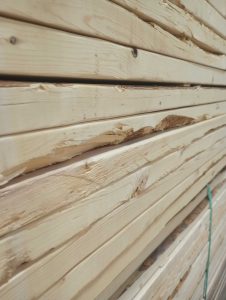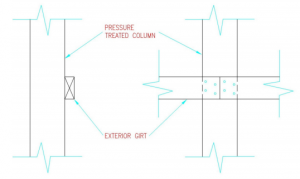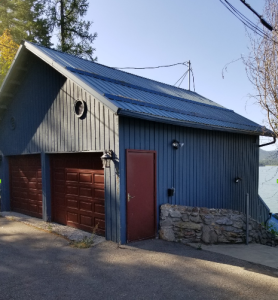
Grab any piece of lumber, with a narrow edge pointed up. Look down the narrow edge and you will normally see an upward or downward arch, or bow to the wood. An upward arch is “crowned up”. This is a common lumber defect. When building your new pole building, it is important for the crowns to be taken into consideration to create uniformity in finished walls, floors or ceilings.
Face the reality – lumber is an organic product, it was once part of a tree and trees rarely grow perfectly straight. Even if the tree did apparently grow straight, trees in the Northern hemisphere have a natural clockwise rotation.
Anyone who has ever built anything from dimensional lumber wishes all pieces were perfectly straight. This would keep all wall, roof and floor surfaces in the same plane. No matter what finish material is applied to any of these surfaces, they benefit when the framing members are in the same plane. While it is possible to have a piece of lumber which is perfectly straight, or with very few lumber defects, including “crown”, these are few and far between.
As a floor, wall or roof in a pole building is assembled, it is important lumber crown be paid attention to. All crowns should point the same direction. With floor or ceiling joists or roof purlins all crowns should point up (towards the sky). Wall girts (especially those set like bookshelves) should be installed with crowns towards the outside of the building.
Lumber grading rules dictate the amount of crown which is allowable for joists and planks (lumber which has a narrowest face of four inches or less). Allowable bow is a function of the length of the board. The longer the board, the more crown. Common framing lumber is graded as #2. A 12 foot long #2 graded piece of lumber may have a crown of as great as 5/8 of an inch and be within grade.
To measure crown, snap a chalk line from the two ends of a piece of lumber along the wide face. The line, when stretched tight, represents a perfectly straight line. Any lumber extending above the chalk line is the “crown” of the piece. A tape measure can be used to determine the amount of the crown.
Lumber crowns can create issues if a severely crowned piece is installed next to one which has no or very little crown (or even worse, is installed with the crown in the wrong direction). Prior to installation all lumber should be checked for defects such as crown and marked. On buildings with sidewall overhangs, very straight pieces should be set aside for use as fascia boards. Lumber with severe crowns should all be segregated and used in the same “bay” to minimize the effects of widely varying crowns.
Just always keep in mind, “Crown Up”!
To receive more pole building tips and advice subscribe to the pole barn guru blog!









You pretty much said what i could not effectively communicate. +1
My site:
internet anbieter klick hier